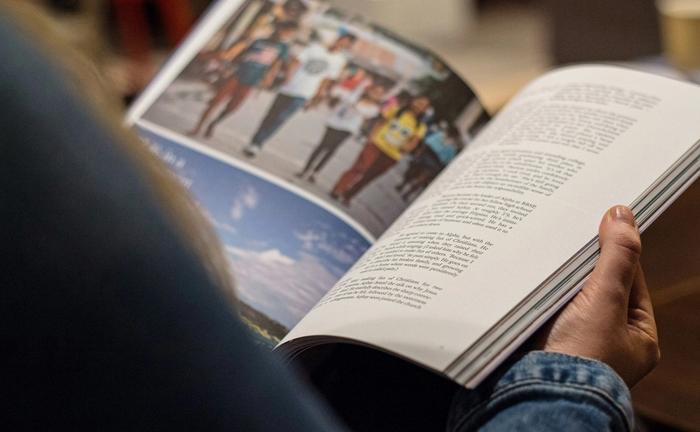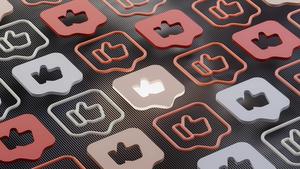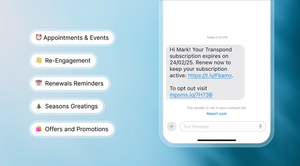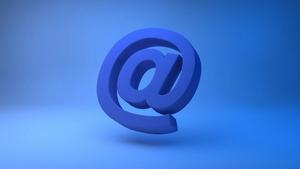Running a successful marketing event is a skill that every marketer needs. 87% of B2B marketers say in-person events play a critical role in their company’s success (Bizzabo) and some organizations spend upwards of 25% of their marketing budget on events.
One of the most important elements of an event is an event program. It’s a vital document that keeps your guests informed on the details of the event and helps them navigate the day. A well-planned event program can make or break an event, so businesses must get the process right. You don’t need a ton of design skills to make an event program, but to make things easier we have a few helpful tips to help you pick the right event program design.
In this guide, we’ll explain how you can create an effective event program that improves the attendee experience and helps you run an engaging event.
What is an event program?
An event program is a structured outline detailing the activities and timeline for a specific event. It covers all the essential details about an event’s purpose, schedule, sessions, speakers, and locations. It’s essential when organizing any structured event that involves multiple activities, sessions, or presentations.
A good program tells participants what to expect and helps organizers ensure that the process goes smoothly. It can be used for various events, including conferences, festivals, workshops, and corporate gatherings. Using an event program template from sources like Eventbrite, Canva, Venngage, Adobe, or Shutterstock Create can simplify and speed up the creation process.

When do you need an event program?
An event program is essential when organizing any structured event that involves multiple activities, sessions, or presentations. This makes it perfect for corporate events like seminars, workshops, conferences, or large networking gatherings.
Providing clear information minimizes confusion and ensures that participants can attend the sessions most relevant to them.
Additionally, an event program aids the organizers in maintaining order and flow throughout the event. It serves as a reference tool for managing logistics, coordinating with speakers and participants, and addressing any changes or issues that may arise. Armed with a well-planned program, organizers can anticipate and mitigate potential disruptions, ensuring that the event runs smoothly. An event program also adds a professional touch, demonstrating thorough planning and consideration for the attendees’ needs.
What should you include in your events program?
An event program is crucial to the success of any event but you need to know what they should include. Let's look at the essential elements you need to include in your event program.
An eye-catching cover
The first step is to create a program that strikes visual interest. You want your attendees to pick up your program so make sure that the cover is eye-catching and engaging. Include a noticeable headline alongside the event name that shares your message and catches the reader's attention.
Ensure that it's branded and includes your company fonts and colors so people know who is behind the event. Event programs can be a great keepsake, so create a program that attendees actually want to have.
Event and contact details
Essential event information is a crucial part of your event program. At many events, guests will receive a digital version of their program before the day to help them plan their activities so it's important to include the date, time, and location to avoid confusion.
Contact details are also important in case attendees need to reach out for assistance or additional information. Providing phone numbers, email addresses, event websites, and social media handles offers multiple avenues for communication, which can be invaluable for addressing queries, solving problems, or providing updates.
Detailed event schedule
Your event schedule is a crucial element of the design process. A timetable or schedule, often presented in a table format, should be clear and concise, allowing readers to easily see what to expect during the event.
For some events, the schedule might cover several days or weeks, so guests know when specific booths will be open. Other events, like lecture series, music festivals, or conferences, will need a detailed list of times and locations for each presentation or show.
Speaker bios
A comprehensive event program needs to be detailed and look great visually. When creating your program ensure that you include details about who your speakers are and why they're here. Adding simple text boxes that cover their careers and expertise lets your guests know why they should attend their talks and the value of your event.
You should also include details about their chosen topic to help attract guests interested in their talks and specialties.
Sponsor information
It's important to acknowledge any sponsors that made your event a success. Your program serves as a chance to thank them for all their help by featuring their brand prominently. This not only gives them the visibility they deserve and likely paid for, but also highlights their association with your brand.
While most event programs just feature their logo, stand out by mentioning their specific contributions and acknowledging their support. This could be via a thank you note or a short description of the company. This recognition helps you to build and maintain strong relationships with these sponsors encouraging them to help you out in the future creating a mutually beneficial relationship.

How to create an event program template
No matter what upcoming event you have in mind it’s important to know how to build an events program. To make your next event a breeze we’ve laid out our top tips for creating an event program that shares all your crucial event information while striking visual interest.
Start with the essentials
To get started, consider the most essential event details that your attendees need to know.
These include:
- The name of your event
- Date of the event
- Location of the event
Essential event details need to be prominent and easy to find, ideally on your front page. To make things even simpler, consider using icons to help your audience navigate your event program easily. For example, a small map icon can help you illustrate the layout of your event and social media icons let your attendees know who they can follow to get real-time event updates.
Confirm your agenda
A print event program is easy for attendees to carry around so they can use them as a quick reference throughout the day. However, they don't allow for changes, so make sure your schedule is completely finalized before sending it to be published.
Some key tips for confirming your agenda include:
- Leave buffer time between each segment in case of unexpected delays.
- Allow time for attendees to move between stages or rooms depending on the size of the event.
- Keep segments short (30-50 minutes) to maintain engagement, avoid fatigue, and allow for comfort breaks.
- Vary segment types include panels, speakers, and networking to keep the event interesting and attendees engaged.
- Recommend arrival and seating times to manage the flow of events and attendees.

Make things easy to navigate
Remember that some of your attendees could be visiting out of town so clearly explain where to find the event venue. If the venue is large consider including a navigational map that explains where each event will be happening and how to get there as well as the location of different stalls, stages, and booths. Having an easy-to-reference map can save your visitors time and let organizers focus on the important stuff rather than directing people to and from each event.
Don't forget branding
Your event attendees will likely have your event program with them throughout the day so make sure they remember who to thank for organizing everything. Within your program make sure to include vital branding elements like:
- Logo
- Brand colors
- Website
- Social handles
- Event hashtags
The last two points allow your attendees to engage with your brand throughout the day and once they've left the venue.
Use quality images
Poor-quality images can make or break an event program. You want your event to be seen as professional and high quality, but using low-resolution images paints the opposite picture.
Remember, if your image looks blurry, pixelated, or distorted on your screen, it will likely appear even worse when printed. So, always start with large, high-resolution images and scale them down as needed, rather than stretching smaller images to fit.
Size matters
Most event programs are A5-sized, which is half the size of a standard A4 piece of paper.
This size is ideal as it can be easily stored in an attendee's bag or pocket and restricts the amount of unnecessary information that can be included.
Half-fold and tri-fold programs are classic choices among readers and designers, but you’re not limited to these styles. Experiment with different folds, such as accordion or gate-folds, and explore unique sizes and shapes. You could even incorporate cutout details to create a truly distinctive program.

Keep it simple
Overly complex layouts can be jarring to the eye, especially when they're printed. Your readers don't have time to read your program in full, they need to find the information they need quickly and easily. Keep things clear, and clutter-free, and remember to use white space to help your message stand out.
If you need to convey a lot of information, consider creating a larger document that includes multiple pages and a contents page. Think about how much space you need to share valuable insights and important details. Keep the copy concise so that your program design remains visually appealing.
Wrapping up
Event planning is an important part of many businesses' marketing. Whether you're looking to host trade shows, a business conference, or a small get-together you need to create an event program that your audience will want to read.
Creating an effective event program is crucial for any successful event. It ensures attendees are well-informed and can navigate the event smoothly. A clear, visually appealing program not only enhances the attendee experience but also reflects well on your brand, making it memorable and professional. A well-crafted event program is a key tool in making your event engaging and organized, ultimately contributing to its overall success.




